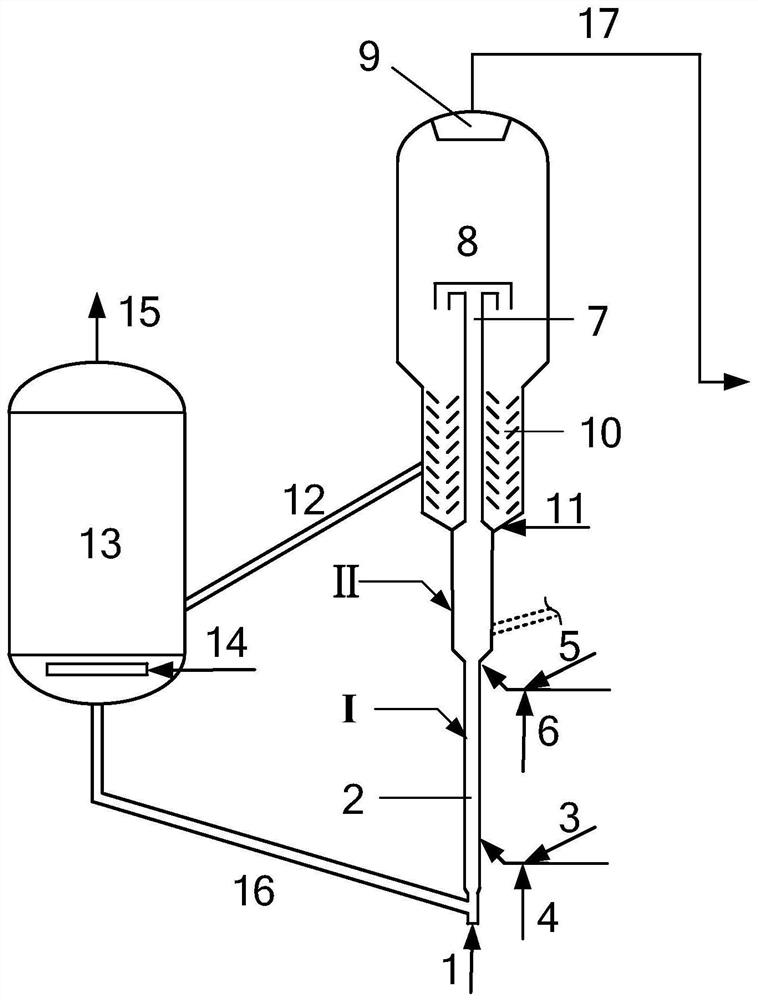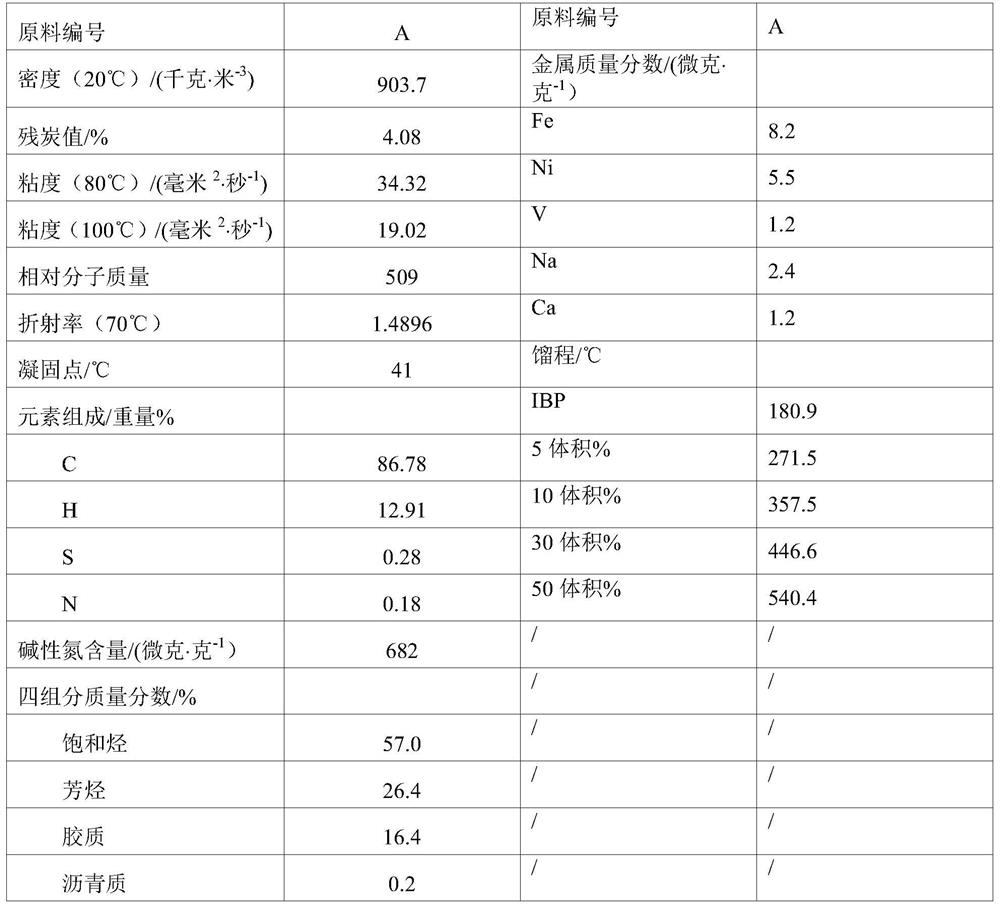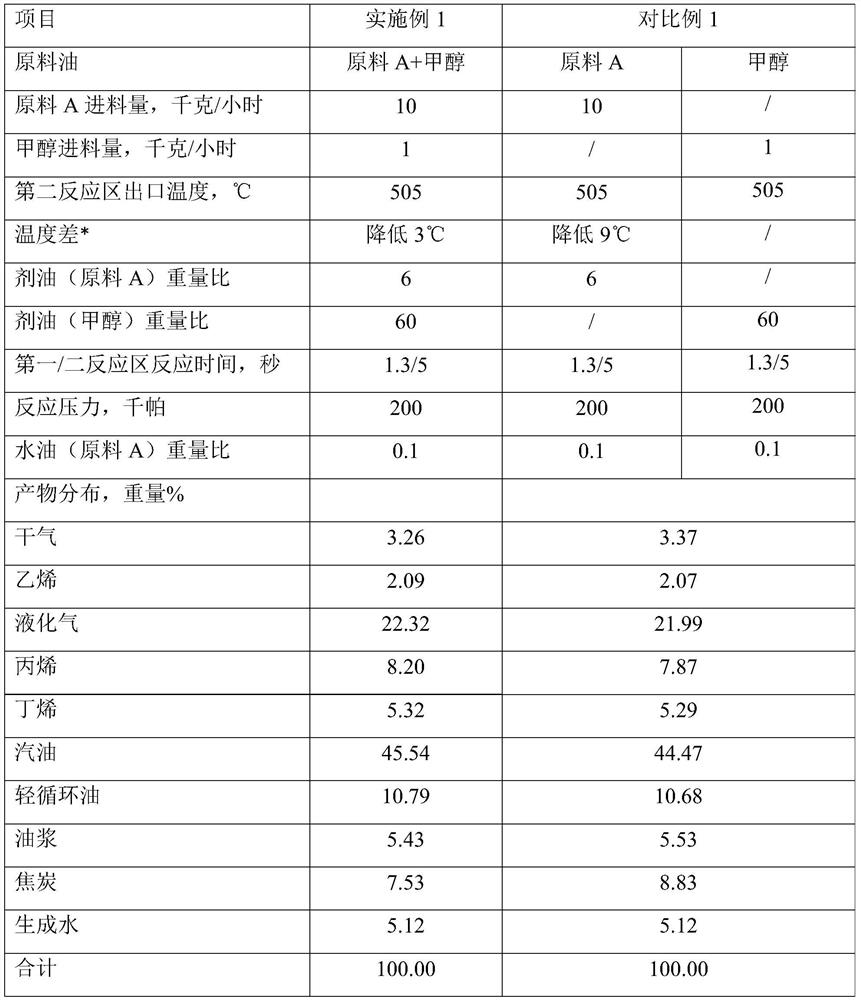A Catalytic Cracking Method for Improving Heat Distribution
A technology of catalytic cracking and heat distribution, which is applied in the direction of only multi-stage series cracking process, preparation of liquid hydrocarbon mixture, and treatment of hydrocarbon oil. It can solve the problems of increased dry gas and coke yield, unfavorable cracking reaction, and solvent High contact temperature and other problems, to achieve the effect of reducing the partial pressure of oil and gas hydrocarbons, reducing thermal cracking reactions, and enhancing selectivity
- Summary
- Abstract
- Description
- Claims
- Application Information
AI Technical Summary
Problems solved by technology
Method used
Image
Examples
Embodiment 1
[0065] Embodiment 1 is according to the aforementioned flow process in the specific embodiment figure 1 The medium-sized device shown was performed. The properties of raw material A used are shown in Table 1, and the catalyst used is catalyst A. The preheating temperature of the oxygen-containing compound is 300° C., and the carbon content of the semi-spent catalyst is 1.3% by weight. The reaction conditions and product distribution are listed in Table 2.
PUM
| Property | Measurement | Unit |
|---|---|---|
| crystallinity | aaaaa | aaaaa |
Abstract
Description
Claims
Application Information
 Login to View More
Login to View More - R&D
- Intellectual Property
- Life Sciences
- Materials
- Tech Scout
- Unparalleled Data Quality
- Higher Quality Content
- 60% Fewer Hallucinations
Browse by: Latest US Patents, China's latest patents, Technical Efficacy Thesaurus, Application Domain, Technology Topic, Popular Technical Reports.
© 2025 PatSnap. All rights reserved.Legal|Privacy policy|Modern Slavery Act Transparency Statement|Sitemap|About US| Contact US: help@patsnap.com



